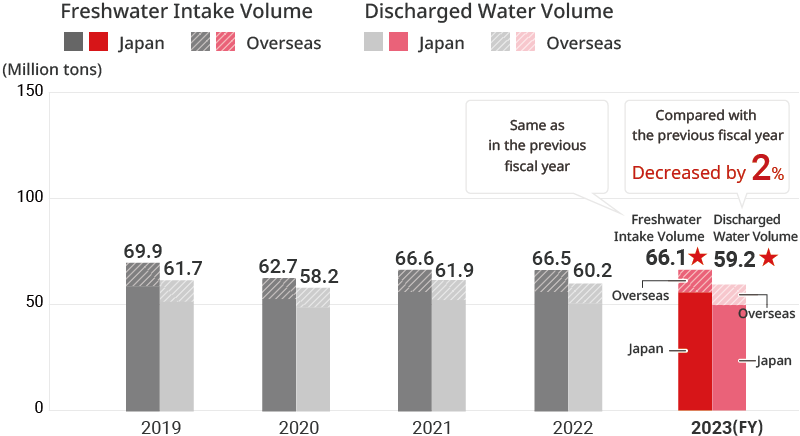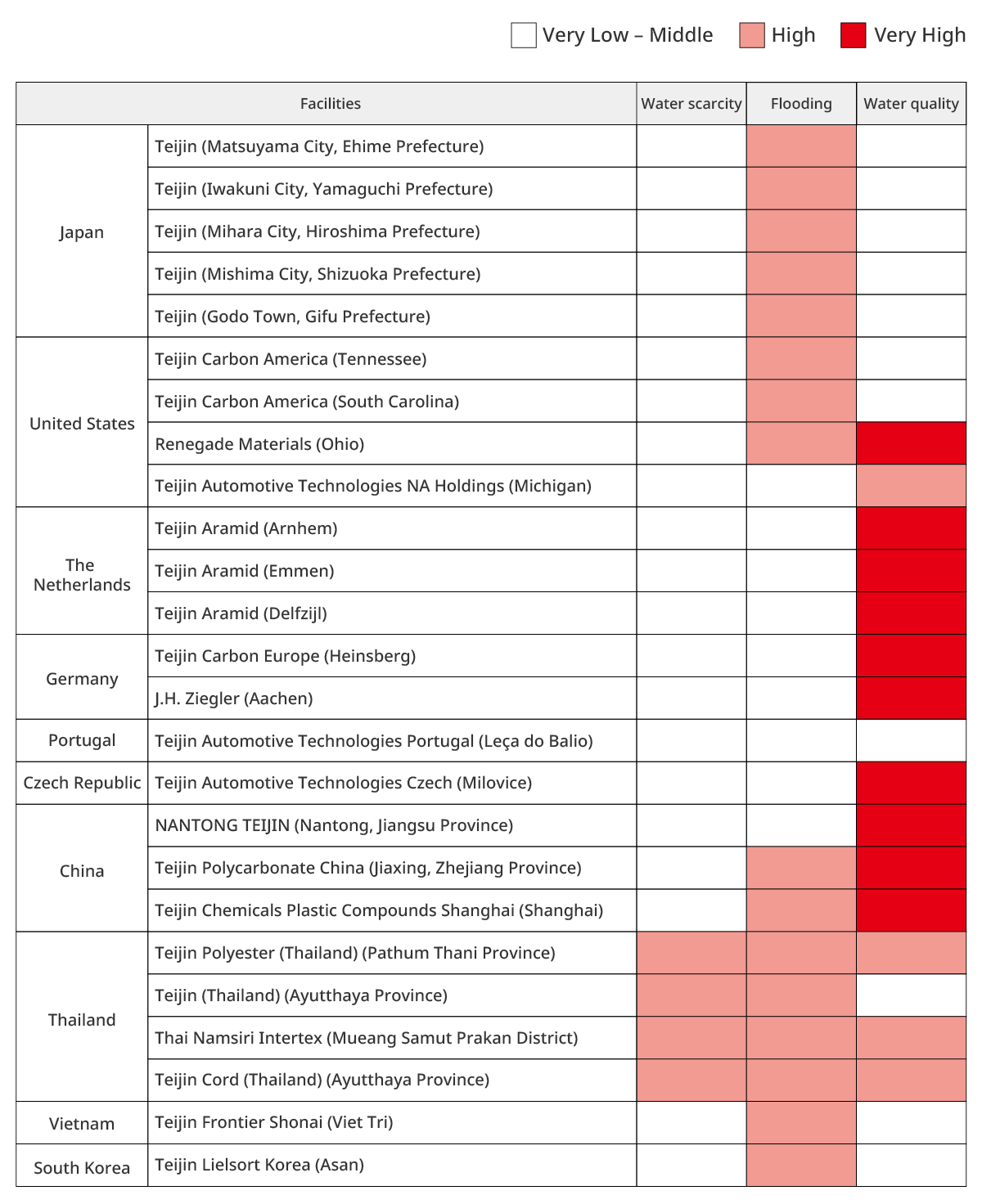Water
Metrics and Targets
The Group's target (KPI)
FY2030: 30% improvement in freshwater intake volume per sales unit (compared with FY2018)
We are expanding the number of products that use less water during the production process and are using water efficiently in our business activities. In these ways, we aim to achieve our target for reducing the amount of freshwater intake with a focus on curtailing water use at manufacturing sites and other locations that use high volumes of water. In FY2024, the freshwater intake volume were 61.5 million tons , and volume per sales unit was 7.3 thousand tons/¥100 million
, and volume per sales unit was 7.3 thousand tons/¥100 million .
.
Trends in freshwater intake volume and volume per sales unit

- *Teijin Automotive Technologies NA Holdings Corp. (hereinafter, "TAT-NA"), a consolidated subsidiary in the materials segment that operates the automotive composites business in North America, has been excluded from the scope of aggregation from FY2024 due to it being a discontinued operation. Past figures include TAT-NA, while figures for FY2024 exclude TAT-NA. The figures in parentheses are reference values that include TAT-NA and are not subject to third-party assurance.
- *The amount of freshwater intake is the total of industrial water, groundwater, and tap water.
- *Per sales units are calculated using consolidated net sales as the denominator. Note that for FY2024, the denominator in the calculation is the amount obtained after deducting the net sales of companies outside the boundary from the consolidated net sales.
Environmental Load due to Wastewater
In FY2024, discharged water volume were 55.0 million tons . Chemical oxygen demand (COD) were 320 tons
. Chemical oxygen demand (COD) were 320 tons . Biochemical oxygen demand (BOD) were 37 tons
. Biochemical oxygen demand (BOD) were 37 tons .
.
Trends in freshwater intake volume and discharged water volume

- *The amount of freshwater intake is the total of industrial water, groundwater, and tap water.
Trends in COD and BOD

- *Applies to wastewater discharged into rivers, oceans and lakes. The COD values is calculated when discharging into sea areas and lakes, and the BOD values is calculated when discharging into rivers.
- *Corrected the COD figures for previous fiscal years in October 2025.
Water Risk Evaluation
The Teijin Group's Materials Business and Fibers & Products Converting Business have a high level of dependence and impact on water. At the main manufacturing bases of these businesses (24 bases), we have conducted evaluations of basin water risks and operational water risks using the Water Risk Filter tool developed by the World Wide Fund for Nature (WWF). The evaluation of basin water risks revealed that multiple bases face risks in terms of water scarcity, flooding, and water quality. Following this, we have designated the three bases in Thailand, which were judged to be at particularly high risk, as water-stressed areas. Meanwhile, the evaluation of operational water risks confirmed that all bases are curtailing risks related to water scarcity, floods, and water quality through the promotion of appropriate response measures. Specifically, to address and reduce the risk of water scarcity, these bases are pursuing measures such as projects to reduce the volume of water used in the product cleaning process. For the risks of floods, the bases have formulated business continuity plans to ensure that operations can continue even in the event of a large-scale natural disaster or other unexpected event. With regard to water quality risks, the bases are striving to reduce COD and BOD. In these ways, our manufacturing bases are promoting measures to appropriately respond to water risks.

